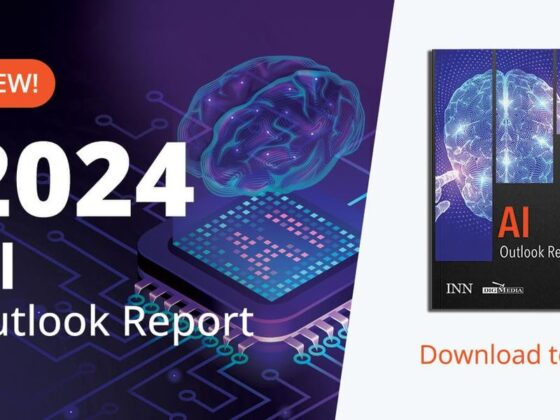Liquidity risk is often misunderstood, yet it plays a crucial role in financial stability and market confidence. The collapse of Silicon Valley Bank (SVB) highlighted how perceptions of liquidity risk — often mistaken for solvency issues — can rapidly escalate into a full-blown crisis. For financial analysts, understanding bank liquidity risk is essential not just for assessing individual banks but also for evaluating broader market conditions.
Whether analyzing balance sheet structures, stress-testing funding sources, or identifying potential market liquidity disruptions, analysts must recognize how liquidity risk influences asset pricing, creditworthiness, and systemic risk.
The primary cause of the SVB failure is often cited as a failure to manage liquidity risk. But what is liquidity risk? Did SVB fail solely because it was unable to fully meet the redemptions of all its depositors? Why couldn’t SVB simply sell its loans and Treasury assets to cover the redemption request of its depositors?
These questions illustrate the typical confusion between liquidity and solvency. In SVB’s case, it was unclear whether the marketable value of its assets (mostly highly liquid Treasury bills and bonds) would have been enough to satisfy its liabilities given the huge unrealized losses it was sitting on. Simply put, the value of its liabilities exceeded the value of its assets at a given moment in time. It was insolvent, not illiquid.
The depositors realized that if they were first in line, they would get back 100% of their deposits. Wait too long, and SVB would have simply run out of funds, unless the remaining deposits were insured by the Federal Deposit Insurance Corporation (FDIC). Many of the deposits were not FDIC-insured. On the surface it might have looked like a pure bank run. Only, it was not.
What Is Bank Liquidity Risk?
Structural Liquidity Risk
Structural liquidity refers to the risks a bank has on its balance sheet because of maturity transformation. The bank pools short, liquid liabilities and buys or issues longer-term, illiquid debt or loans. The liquidity risk here arises from balance sheet structure due to maturity mismatch.
Term Liquidity Risk
Term liquidity refers to a mismatch between the timing of a bank’s cash inflows from its assets and the cash outflows to fund its liabilities. Structural and term liquidity are related because asset portfolio cash inflows are typically contractual in nature and do not always align with liabilities cash outflows. These deposit and short-term borrowing cash flows are largely behavioral, non-contractual, in nature.
Contingent Liquidity Risk
Contingent liquidity risk refers to the risk of having insufficient funds to meet sudden or unexpected short-term obligations. Contingent liquidity is related to structural and term liquidity in a sense that there is always a possibility of a mismatch. Banks always need a way to plug the gap in short-term cash.
On any given day, there might be an unusually large deposit withdrawal or many of the borrowers may decide to draw down on their line of credit. The Federal Reserve discount window, the repo market, or the Federal Home Loan Bank (FHLB) credit line are a few contingent credit facilities that banks can draw on. Banks should ensure that they always have access to these secured lines. Banks must also ensure that they have high-quality, unencumbered assets to use as collateral to secure the credit.
Market Liquidity Risk
Market liquidity risk is the risk that arises from the inability to sell assets into the market at “fair value” due to temporary market disruptions. This disruption usually manifests itself in very large bid-ask spreads.
What Is Bank Liquidity Risk Management?
Banks rely on several forms of liquidity risk management.
Tactical Liquidity Risk Management
There are two fundamental ways of assessing tactical liquidity risk: Net cash position and maturity mismatch approach.
Net cash position measures the bank’s ability to fund its assets on a fully collateralized basis. It looks at the ratio or the difference between highly liquid securities (unencumbered, repo eligible) and unsecured, short term rating-sensitive funding. Basel LCR, NSFR is an example of such an assessment. This approach is simple and intuitive but says nothing about the timing. In other words, it tells you the banks can survive but not for how long.
Maturity mismatch approach matches the inflows and outflows of cash based on residual maturity (whole loans, for example.), liquidation period (AFS and investments, for example), short-term contingent outflows (line of credit and guarantees, for example) and behavioral maturities (NMDs and prepayments, for example). These flow-based approaches are the Fed’s method for assessing and reporting liquidity risk.
Strategic Liquidity Risk Management
Strategic liquidity risk management refers to predicting and managing how news and information about a bank’s net worth, its creditworthiness, or its overall credit or market risk position will affect its ability to borrow or to attract or maintain its depositors and investors. There are three questions the banks must address with regards to strategic liquidity risk management:
- Funding sources: Are the CD/CP’s, repo, securitization, and reliance on backup lines and the Fed all back-tested and reliable? Does the bank have a contingency plan?
- Scenario analysis: How stable are the behavioral models and assumptions under various scenarios, and how are the net cash or mismatch gap assessments impacted? Has the bank tested the model assumptions under stress scenarios?
- Internal funds transfer pricing: How quickly will those who lend to banks pull out given certain set of events? What is the cost of raising additional liquidity or attracting new deposits or investors? And are those costs being allocated to the right business lines?

Key Takeaways
Liquidity risk is more than just the ability to access cash — it is about managing uncertainty in timing, availability, and cost of funds. The distinction between liquidity and solvency is critical, as seen in high-profile banking failures like SVB where asset values failed to cover liabilities.
Effective liquidity risk management requires banks to address structural mismatches, anticipate contingent liquidity needs, and maintain reliable funding sources. Without a robust strategy, even well-capitalized banks can face destabilizing crises. Understanding these dynamics is essential for assessing financial stability and ensuring resilience in an unpredictable banking environment.











